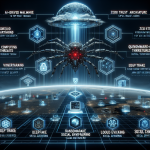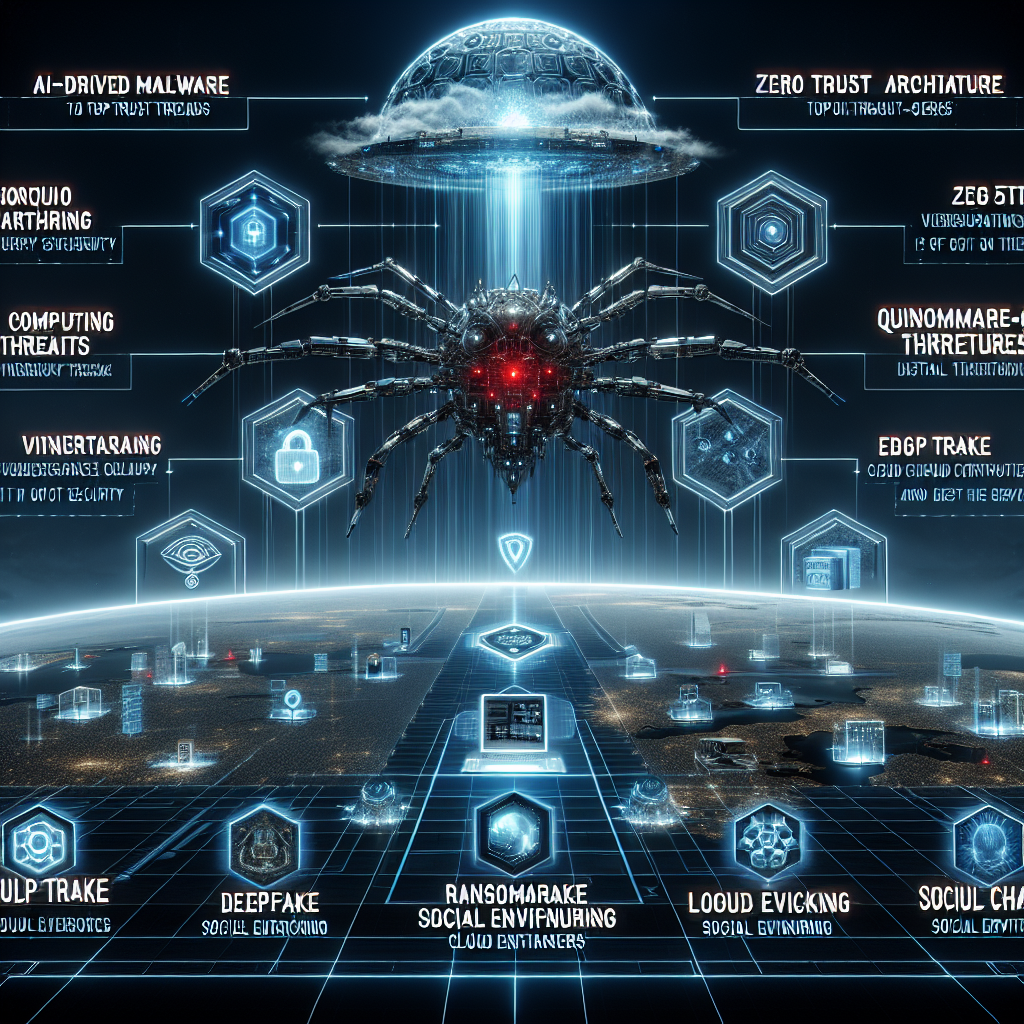## Introduction
Today, almost everyone is connected to the internet, so knowing about cybersecurity trends isn’t just for tech lovers—it’s something everyone should care about. The online world is changing fast, with new threats and ways to protect ourselves popping up all the time. To stay safe and enjoy using the internet, it’s important to understand these changes. This way, businesses, people, and even different fields like health and nutrition can keep running smoothly and safely. This blog post is here to help you get ready for the year 2025 so you can keep having fun online.
## 1. AI is Powering New Cyber Threats
Artificial Intelligence (AI) is no longer something from the future; it’s a tool that cybercriminals are already using. AI-driven threats include attacks that happen automatically and smart malware that learns to get around security systems. These threats are especially scary because they allow for super smart and huge attacks that are hard to find and stop. Places like healthcare and finance might feel the impact of these AI-powered threats, which could affect millions of people who use digital services every day.
## 2. Better Security for Remote Work
Many people are working from home now, and that means new security challenges. Keeping our computers and data safe when we work remotely is really important. Tools like virtual private networks (VPNs), encrypted communications, and advanced ways to prove your identity are helping make sure remote work stays safe and easy.
## 3. Challenges of Quantum Computing
Quantum computing is a big deal, bringing new inventions but also some risks to cybersecurity. As these powerful computers become more common, they might break the way we encrypt data today. This could lead to big breaches of data. Experts are working on new methods to protect our digital world from these risks. Staying informed about these changes is important as quantum computing continues to grow.
## 4. Zero Trust Architecture
“Never trust, always verify” is the idea behind Zero Trust Architecture. It means checking every time someone tries to access a resource, no matter where they are. More and more places are using Zero Trust to keep information safe. This involves using technologies like identity and access management (IAM), breaking up networks, and strong authentication methods. Adopting Zero Trust can greatly reduce risks.
## 5. New Ransomware Strategies
Ransomware is changing, with criminals using more complex tricks and demands. Attacks backed by governments make things even harder by mixing with international politics. To fight these threats, it’s important to regularly back up data, keep software updated, and train employees. Both businesses and people need to watch out and protect themselves against these smart attacks.
## 6. More IoT Devices
There are more Internet of Things (IoT) devices than ever, bringing convenience but also new risks. More devices mean more ways for hackers to attack. Securing these devices is crucial for keeping personal privacy and data safe. The best ways to keep IoT devices safe include updating default passwords, applying software updates, and keeping IoT devices separate from important networks.
## 7. Changes in Rules and Compliance
Following new global cybersecurity regulations and compliance standards is very important for businesses. Changes in data protection laws can have big effects, and not following them can lead to heavy fines and damage to a company’s reputation. The predicted trends in IT governance and risk management stress the need to keep assessing and adapting to stay compliant. Following regulations isn’t just about avoiding fines—it’s about building trust and integrity in what you do.
## 8. Identity Verification Innovations
Techniques like biometric and multifactor authentication (MFA) are becoming more common and offer better security for your online activities. However, these technologies raise concerns about privacy and data protection. Future developments in secure identity verification will likely seek to balance convenience, security, and privacy, exploring new methods that protect users.
## 9. Evolution of Cloud Security
As more people move to cloud computing, strong security measures are needed to protect data. As cloud services become more important, maintaining strong cloud security is crucial. New cloud-native security tools, like container security solutions and serverless application protection, help reduce risks while letting organizations use cloud benefits with safety and efficiency.
## 10. Supply Chain Security Risks
Supply chain attacks are becoming more common, leading to disruptions and losses. Managing risks with vendors is more important than ever, because attackers often target weaker links in supply chains. Regular security checks, strict vendor assessments, and strong plans for dealing with incidents are necessary to protect against these threats. Building strong supply chains can help make sure things keep running smoothly and problems are kept to a minimum.
## Conclusion
The world of cybersecurity is always changing. Staying ahead requires being proactive, learning continuously, and committing to security. From AI-driven threats to quantum computing advancements, the trends discussed hold big implications for how we protect our digital lives. By embracing these changes and preparing now, you and your business will be better equipped to face future challenges.
## Call to Action
Get involved with cybersecurity communities and resources to stay informed and aware. Sharing experiences and insights makes our collective understanding better and enhances protection efforts. We invite you to share your thoughts and experiences in the comments section below. Together, we can handle the evolving cybersecurity landscape with confidence and resilience. Let’s stay safe and connected, just like our digital world wants us to be!











